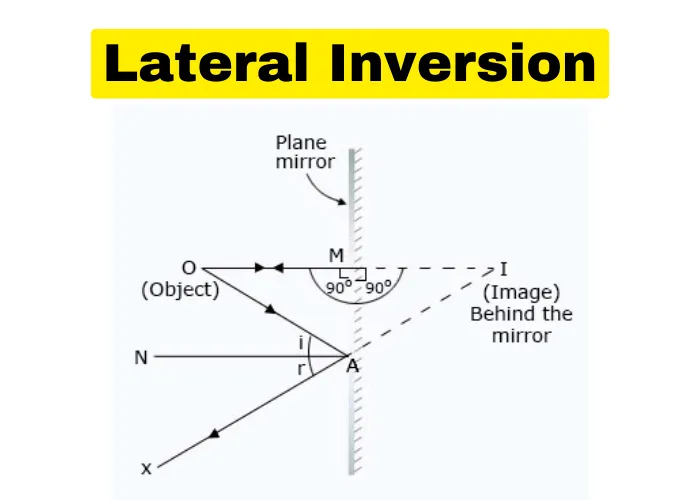Contents
The term “antilogarithm” refers to the inverse operation of a logarithm. In mathematics, exponent-based problems solve with the help of logarithms. The antilogarithm or “antilog” use to reverse this process and find the original number
Antilogarithms use in many fields, including mathematics, science, and engineering. In mathematics, antilogarithms use to solve equations that involve logarithms. In this article, we will explore antilogarithm with its mathematical expression. We will learn how to calculate antilogarithms with the help of some examples.
Definition of an Antilogarithms
In mathematics, an antilogarithm is the inverse operation of the logarithm. If log x = y then, Antilog y = x. The antilogarithm of a number is represented by 10x. Here x logarithmic value for which you want to find antilog. For example, if the logarithm of a number is 2, then the antilogarithm of that number would be 102, which is equal to 100.
In other words, the antilogarithm of a number is the exponent that a given base must raise to equal that number. For example, the antilogarithm of 100 in the base 10 is 10, because 10 raised to the power of 2 is 100.
How to calculate Antilogarithms?
There are different methods to calculate antilog. Here are the most common methods used to find a number’s antilogarithm.
- By using an antilogarithm table
- By using the antilog calculator
Antilog by using an antilogarithm table
The systematic method is given below to determine the antilog by using the antilog table:
- Identify the logarithmic value for which you want to find antilog.
- Separate the logarithmic value into the characteristics (Integral part of the logarithm) and mantissa (Decimal part of the logarithm).
- Look up mantissa in the antilog table.
- Find the first two digits after the decimal point in the first column of the antilog table and the third value of mantissa in the row. Write down the corresponding number of rows and columns from the antilog table.
- Find the corresponding value of the first two digits after decimal point and the fourth value of the mantissa in the mean difference.
- Add the obtained value from steps 4 and 5.
- Decimal move-forward steps (from the left side) are calculated after adding 1 with a given characteristic.
Antilog by using the antilog calculator
Calculate the antilog value of 10x. Here x is the given number. The obtained value is the antilogarithm of the given number. Write down the given antilog value & antilog base, click the calculate button in the antilog calculator. The obtained number is the antilog of the given number.
Properties of Antilogarithm
The antilog is the inverse process of the logarithm. It allows you to find the original value from its logarithm. Here are some properties of the antilog:
- The Antilog of zero is one.
- The antilog of a logarithm is the number itself.
- The antilogarithm reverses the effects of the logarithm function. If y = log ax, then the antilogarithm of y to the base “a” is given by x = antilog ay.
- The antilogarithm can be used to convert a logarithm from one base to another. If y = log ax, then the antilogarithm to the base b is given by x = antilog ay = Antilog by / Antilog ba).
- The antilogarithm can express in exponential form. If y = log ax, then x can be written as x = ay.
- The Antilog of the sum of two logarithms is equal to the product of their antilog. If y = log ax and z = log aw, then x * w = antilog ay + z.
- The antilog of the difference of two logarithms is equal to the division of their antilog. If y = log ax and z = log aw, then x / w = antilog ay – z.
Solved Examples of Antilogarithm
Here are some examples that may help you to understand Antilog better.
Example 1:
Calculate the antilog of 0.0224 by using the Antilog table.
Solution:
Step 1: Split the logarithmic value into the characteristics and mantissa. Here,
Characteristic (integral part) = 0
Mantissa (decimal part) = .0224
Step 2: Look up mantissa in the antilog table. Find the first two digits after the decimal point (.02) in the first column of the antilog table and the third value (2) of mantissa in the row.
Antilog Table
| 0 | 1 | 2 | 3 | 4 | 5 | 6 | 7 | 8 | 9 | Mean difference | |||
| 1 2 3 | 4 5 6 | 7 8 9 | |||||||||||
| .00 | 1000 | 1002 | 1005 | 1007 | 1009 | 1012 | 1014 | 1016 | 1019 | 1021 | 0 0 1 | 1 1 1 | 2 2 2 |
| .01 | 1023 | 1026 | 1028 | 1030 | 1033 | 1035 | 1038 | 1040 | 1042 | 1045 | 0 0 1 | 1 1 1 | 2 2 2 |
| .02 | 1047 | 1050 | 1052 | 1054 | 1057 | 1059 | 1062 | 1064 | 1067 | 1069 | 0 0 1 | 1 1 1 | 2 2 2 |
Write down the corresponding number of rows and columns from the antilog table. Here the corresponding number is 1052.
Step 3: Now find the corresponding value of the first 2 digits after decimal point and the fourth value (4) of the mantissa in the mean difference.
| 0 | 1 | 2 | 3 | 4 | 5 | 6 | 7 | 8 | 9 | Mean difference | |||
| 1 2 3 | 4 5 6 | 7 8 9 | |||||||||||
| .00 | 1000 | 1002 | 1005 | 1007 | 1009 | 1012 | 1014 | 1016 | 1019 | 1021 | 0 0 1 | 1 1 1 | 2 2 2 |
| .01 | 1023 | 1026 | 1028 | 1030 | 1033 | 1035 | 1038 | 1040 | 1042 | 1045 | 0 0 1 | 1 1 1 | 2 2 2 |
| .02 | 1047 | 1050 | 1052 | 1054 | 1057 | 1059 | 1062 | 1064 | 1067 | 1069 | 0 0 1 | 1 1 1 | 2 2 2 |
Step 4: Now add the obtained values from steps 2 and 3. 1052 + 1 = 1053
Step 5: Decimal move forward 1 step from the right side. (By adding 1 in a given characteristic).
Thus, the antilogarithm of 0.0224 is 1.053.
Example 2:
Calculate the antilog of 0.0224 by using the calculator.
Solution:
Here, the given value = x = 0.0224
Calculate 10x
100.0224 = 1.0529
Hence, the antilogarithm of 0.0224 is 1.0529.
Conclusion
In this article, we have explored antilogarithm with its mathematical representation. We learned different methods to calculate antilogarithms. We covered important properties of antilog in this article.
We did practice some problems of antilog to understand antilog better. Having knowledge of antilog enables you to engage the complex questions of mathematics.


![Corporate Accounting [Important Questions & Answers with MCQ] Corporate Accounting Important Questions & Answers](https://edukar.org/wp-content/uploads/2022/09/Corporate-Accounting-Important-Questions-Answers-1024x597.webp)



![What is Sublimation with Examples? [Class 9,10th,11th] What is Sublimation with Examples](https://edukar.org/wp-content/uploads/2023/03/What-is-Sublimation-with-Examples.webp)
![Zoology Important Questions [Class 11th-English medium] Zoology Important Questions class 10 english medium](https://edukar.org/wp-content/uploads/2022/09/Zoology-Important-Questions-class-10-english-medium-1024x597.webp)
![Biology Class 10 Very important [Questions &Answers] Biology Important Questions with Answers class 10](https://edukar.org/wp-content/uploads/2022/09/Biology-Important-Questions-with-Answers-class-10-1024x597.webp)


![Carbon And Its Compounds Important Questions [Class 10] Carbon And Its Compounds Important Questions Class 10](https://edukar.org/wp-content/uploads/2022/09/Carbon-And-Its-Compounds-Important-Questions-Class-10-1024x597.webp)

![Web application and Security Class 10 [Questions Answers & MCQs] Web application Class 10 Questions & Answers](https://edukar.org/wp-content/uploads/2022/09/Web-application-Class-10-Questions-Answers-1024x597.webp)

